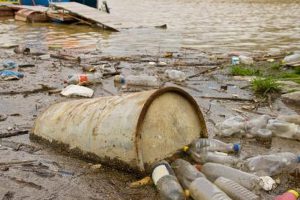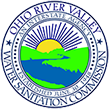This project has been completed.

The Ohio River Watershed Pollutant Reduction Program was initiated in 1995 and continued until 2010. Its goal was to generate information relevant to reducing levels of significant pollutants found in the Ohio River Basin. Objectives to accomplish this goal included determination of the extent and severity of waterborne pollutants, identification of sources, quantification of pollutant reductions necessary to achieve full beneficial uses, and development of strategies to achieve reductions on an interstate basis.
The program was designed to be pollutant-specific – the set of pollutants included bacteria, dioxin, PCBs, chlordane, atrazine, phosphorus, and nitrogen. These pollutants were identified to cause significant impairment to the beneficial uses of the Ohio River.
The Ohio River Watershed Pollutant Reduction Program made great strides in advancing the understanding of the presence of contaminants causing use impairments in the Ohio River and its tributaries. Innovative techniques to detect and analyze these contaminants were developed through the program’s initiatives.
Watershed Program Monitoring Data
Program monitoring efforts focused on characterizing the extent and severity of dioxin, PCBs, and chlordane contamination, as well as assessing E. coli levels in the Ohio River and its tributaries. Extensive multi-media sampling has been conducted to quantify levels of these contaminants in water, fish, ambient air, and bottom sediments.
Sampling Methods
A variety of sampling methods were employed through the Ohio River Watershed Pollutant Reduction Program to quantify levels of contaminants in the Ohio River and its tributaries.
Pollutant Reports
Eight pollutants were selected for inclusion in the program. Reports were completed for each individual pollutant to characterize what is known about these contaminants and its presence in the Ohio River Basin. Pollutant reports were completed for dioxin, polychlorinated biphenyls (PCBs), chlordane, atrazine, copper, lead, nitrogen and phosphorus.
Total Maximum Daily Loads (TMDLs)
Follow the link for general TMDL information and more information on the Ohio River TMDLs completed as part of the Ohio River Watershed Pollutant Reduction Program.
For more information about ORSANCO’s Ohio River Watershed Pollutant Reduction Program, contact Sam Dinkins.
Other Programs
- Algae & Nutrient Monitoring
- Bacteria TMDL
- Biennial Water Quality Assessment
- Bimonthly Water Quality Sampling
- Clean Metals
- Contact Recreation Bacteria
- Dissolved Oxygen Monitoring
- Emergency Response
- Fish Population
- Fish Tissue
- Harmful Algae Blooms
- Macroinvertebrates
- Mercury Supplemental Studies
- National Rivers and Streams Assessment
- Nutrient Reduction Activities
- Ohio River Users
- Organics Detection System (ODS)
- PFAS Supplemental Study
- Pollution Control Standards
- Source Water Protection
- Water Quality Trends
- Watershed Pollutant Reduction
- Wet Weather Studies

